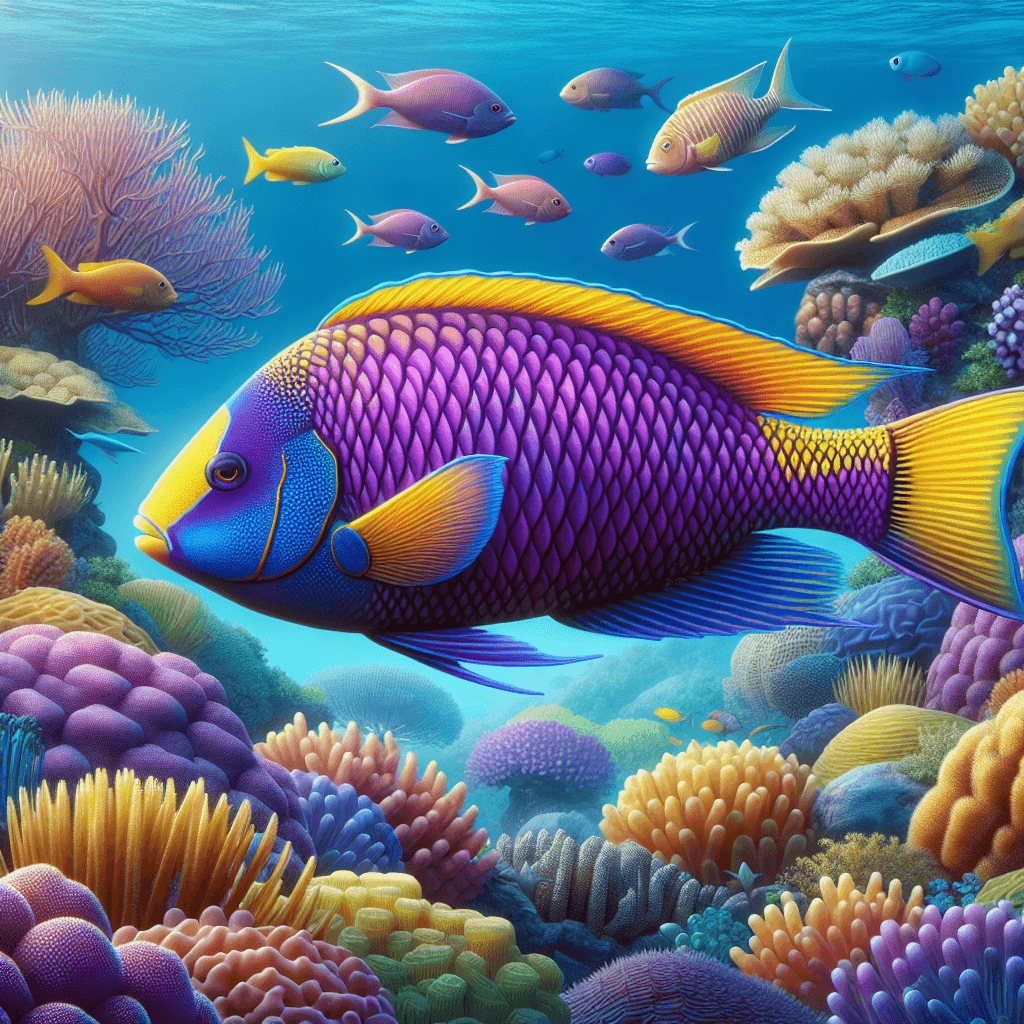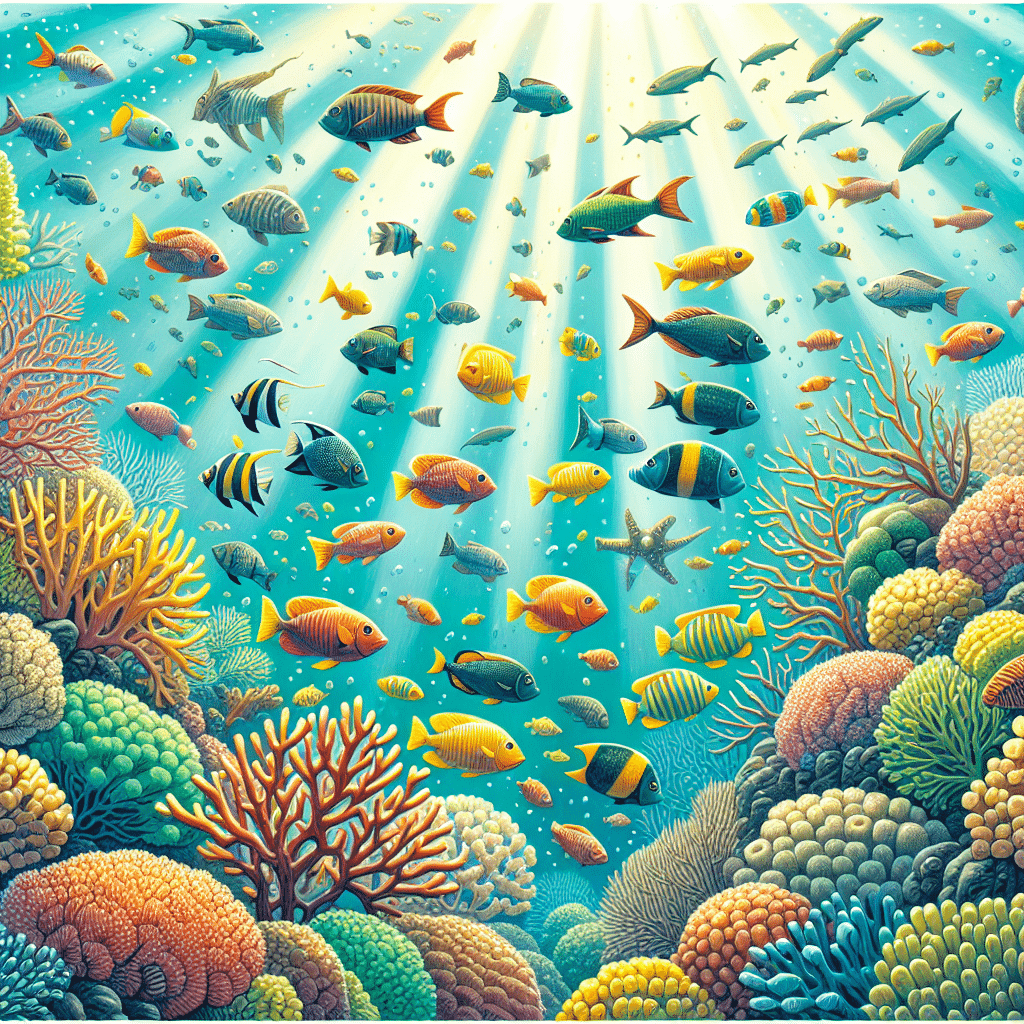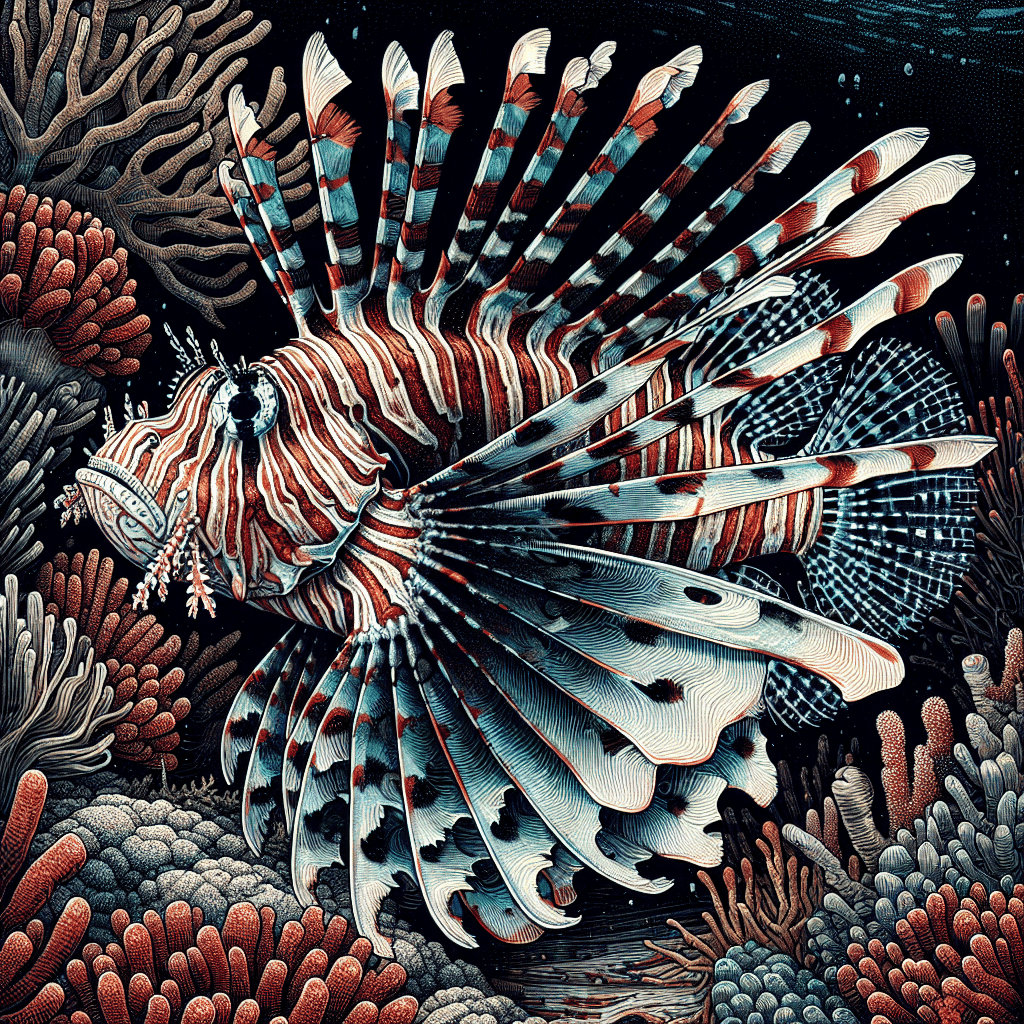Introduction to Royal Gramma
Overview of Royal Gramma
I want to introduce you to the Royal Gramma (Gramma loreto), a captivating fish that has become a favorite among reef tank hobbyists. Known for its vibrant colors and charming personality, this peaceful fish thrives in a community setup while adding a splash of beauty to any aquarium.
The Royal Gramma is native to the tropical reef environments of the western Atlantic Ocean, ranging from the Bahamas and Venezuela to Bermuda and the waters around Central America and northern South America (Frags2Fishes). Measuring around 3 inches at maximum size, it features a striking bright purple head that beautifully transitions into a neon yellow tail area (FantaSEA Aquariums).
One of the great things about the Royal Gramma is its peaceful nature. It can cohabitate with various species, making it ideal for community tanks. However, it’s worth noting that they can become territorial in smaller spaces or if their personal area is encroached upon. For optimal living conditions, it’s recommended to keep them singly or in pairs, avoiding larger, aggressive fish that might disrupt their tranquility (Frags2Fishes).
For those considering adding this fish to their aquarium, a 30-gallon (113.6 L) tank is suggested for a single Royal Gramma, with an additional 10 gallons (37.8 L) for each extra fish. They pair well with non-aggressive companions like clownfish, gobies, and blennies, making them a delightful addition to any reef tank setup (Abyss Aquatics).
Royal Gramma Habitat
Understanding the habitat requirements for the Royal Gramma is essential for keeping this vibrant fish healthy and happy in an aquarium setting.
Natural Habitat of Royal Gramma
The Royal Gramma (Gramma loreto), also known as the fairy basslet, is native to the reef environments of the tropical western Atlantic Ocean. This stunning species thrives in areas rich with coral and rock formations, where it can find both shelter and food. In the wild, these fish often dart in and out of crevices and caves, making their homes in the nooks and crannies of the reef (Wikipedia).
Aquarium Requirements for Royal Gramma
When creating a suitable environment for a Royal Gramma in an aquarium, there are several important factors to consider:
Tank Size: The minimum suggested tank size for a Royal Gramma is 30 gallons (113.6 L). If you plan to keep more than one, add an additional 10 gallons (37.8 L) for each extra fish.
Water Parameters:
Temperature: 72°F to 78°F (22°C to 26°C)
pH: 8.1 to 8.4
Salinity: 1.020 to 1.025 specific gravity
These parameters mimic the natural habitat of the Royal Gramma and are crucial for their well-being.
| Parameter | Ideal Range |
|---|---|
| Tank Size | 30 gallons (113.6 L) |
| Temperature | 72°F to 78°F (22°C to 26°C) |
| pH | 8.1 to 8.4 |
| Salinity | 1.020 to 1.025 |
In terms of tank mates, Royal Grammas are generally peaceful and can coexist with other non-aggressive species like clownfish, gobies, and blennies. However, they can become territorial in smaller tanks, so it’s best to provide adequate space and hiding spots. They are considered entirely reef safe, meaning they won’t bother corals, clams, or invertebrates (FantaSEA Aquariums).
By ensuring the right habitat conditions, I can create a thriving environment for my Royal Gramma, allowing it to display its beautiful colors and unique personality.
Care and Feeding
Taking care of my royal gramma means paying attention to their specific needs, especially when it comes to water parameters and feeding. Here’s what I’ve learned about keeping them happy and healthy.
Water Parameters for Royal Gramma
To ensure my royal gramma thrives, I keep a close eye on the water conditions in the aquarium. These fish are moderately difficult to care for, requiring specific water parameters. Here’s a quick overview:
| Parameter | Ideal Range |
|---|---|
| Temperature | 72 – 82 °F (22 – 28 °C) |
| pH | 8.1 – 8.4 |
| Specific Gravity | 1.020 – 1.025 |
Regular water changes are essential to maintain good water quality, as these fish are sensitive to high levels of nitrates and other pollutants (Abyss Aquatics). Keeping these parameters stable will help my royal gramma live a long and healthy life.
Feeding Royal Gramma
When it comes to feeding my royal gramma, I make sure to provide a varied diet. These little guys are carnivorous, so I stick to high-quality meaty foods. Here’s what I typically include in their meals:
- Mysis shrimp
- Brine shrimp
- Small pieces of fish or squid
I feed them twice a day, offering only the amount they can consume in a few minutes. This helps prevent waste in the tank and keeps them from becoming picky eaters (Abyss Aquatics). It’s important to keep their diet varied to ensure they get all the nutrients they need.
By staying on top of their water parameters and providing a balanced diet, I can keep my royal gramma happy and healthy in my reef tank. If you’re interested in learning more about other types of fish, check out our section on marine fish.
Behavior and Compatibility
Behavior of Royal Gramma
I find the Royal Gramma to be a fascinating fish with a unique personality. These fish are generally peaceful and can thrive in a community tank. However, they do have a bit of a territorial streak, especially in smaller aquariums or when their personal space is invaded. It’s best to keep them singly or in pairs to prevent any aggressive behavior. If you’re considering adding a Royal Gramma to your tank, make sure to provide plenty of hiding spots and structures, as they love to dart in and out of their safe spaces.
Tank Mates for Royal Gramma
When it comes to tank mates, Royal Grammas can coexist with a variety of non-aggressive species. I’ve found that they do well with clownfish, gobies, and blennies, among others. It’s essential to avoid pairing them with larger or aggressive fish, as this can lead to stress or confrontations. A well-sized aquarium is crucial; a 30-gallon (113.6 L) tank is recommended for a single Royal Gramma, and you should add an extra 10 gallons (37.8 L) for each additional fish.
Here’s a quick reference table for compatible tank mates:
| Compatible Fish | Notes |
|---|---|
| Clownfish | Peaceful and social |
| Gobies | Small and non-aggressive |
| Blennies | Generally friendly |
| Firefish | Peaceful but needs hiding spots |
| Damselfish | Can be territorial, monitor closely |
Avoid keeping them with aggressive species like lionfish or triggerfish, as these can create a hostile environment for your Royal Gramma. By choosing the right tank mates and ensuring enough space, your Royal Gramma can thrive alongside other beautiful reef fish.
Breeding Royal Gramma
Breeding royal gramma can be a rewarding experience for hobbyists. With the right setup and care, it’s possible to raise fry successfully. Here, I’ll walk through the essentials for creating a breeding tank and the breeding process itself.
Breeding Tank Setup
Setting up a breeding tank requires careful consideration of space and environment. The minimum suggested tank size for a royal gramma is 30 gallons. This size helps prevent aggression, as these fish can become territorial in smaller spaces. Here are some key elements to include in your breeding tank setup:
| Feature | Requirements |
|---|---|
| Tank Size | Minimum 30 gallons |
| Hiding Places | Use rocks, caves, or PVC pipes for shelter |
| Water Temperature | 75°F to 80°F (24°C to 27°C) |
| pH Level | 8.1 to 8.4 |
| Salinity | 1.020 to 1.025 specific gravity |
It’s important to maintain these water parameters consistently, as royal grammas thrive in stable environments. The tank should be well-cycled before introducing any fish. Adding plenty of hiding spots is crucial, as the male will build a nest among the rocks, which is essential for breeding.
Breeding Process
The breeding process for royal grammas can be relatively easy, especially when a bonded pair is introduced. Here are the steps to follow:
Choosing a Pair: It’s best to start with a bonded pair. You can achieve this by introducing one male and one female or a male with multiple females in a larger setup.
Nesting Behavior: Once the pair is in the tank, the male will begin to build a nest among the rocks. This behavior is vital for breeding, as the nest serves as a safe place for the eggs.
Spawning: The female will lay eggs in the nest, and the male will fertilize them. Royal grammas are known for their parental care, with the male guarding the nest and the eggs.
Caring for the Fry: After a few days, the eggs will hatch into fry. It’s essential to provide appropriate care for the fry, including feeding them with infusoria or finely crushed flakes suitable for baby fish.
Monitoring Water Quality: Keeping the water quality high is crucial during this stage to ensure the fry grow healthy. Regular water changes and monitoring of parameters will help maintain a suitable environment.
Breeding royal gramma in a home aquarium can be a bit challenging but very rewarding with proper preparation. With patience and attention to detail, you can enjoy the process of raising these colorful fish. For tips on caring for other marine species, check out our articles on marine fish and specific species like clownfish or tangs.
Health and Maintenance
Water Quality for Royal Gramma
Maintaining the right water quality is crucial for the health of Royal Grammas. These fish are considered moderately difficult to care for, and they thrive in specific water conditions. Here are the ideal parameters you should aim for:
| Parameter | Ideal Range |
|---|---|
| Temperature | 72 – 82 °F (22 – 28 °C) |
| pH | 8.1 – 8.4 |
| Specific Gravity | 1.020 – 1.025 |
Regular water changes are essential to keep toxins like nitrates in check, as Royal Grammas are sensitive to high levels of pollutants (Abyss Aquatics). I usually aim for a 10-15% water change weekly to maintain stability and clarity in the tank.
Common Health Issues
When it comes to feeding, Royal Grammas are carnivorous and require a varied diet to stay healthy. I feed mine a mix of high-quality meaty foods, including mysis shrimp, brine shrimp, and small pieces of fish or squid. It’s best to feed them twice a day with only the amount they can consume in a few minutes to prevent overfeeding. A varied diet helps keep them from becoming picky eaters.
Some common health issues to be aware of include:
- Ich: A common parasite that can infect fish. Look for white spots on the body or fins.
- Fin Rot: This can occur in poor water quality. Watch for frayed or discolored fins.
- Stress: Changes in tank mates or water quality can stress Royal Grammas, leading to health issues.
Keeping an eye on their behavior and appearance can help catch any issues early. Regularly testing water quality and maintaining a clean environment will go a long way in keeping your Royal Gramma healthy. For more information on other marine fish care, check out our sections on marine fish and clownfish.



